Argentina is a big place, and its cultural imprint is even bigger. Of course, the tantalizing tango may be the country’s most famous cultural export, but the full range of Argentina’s culture encompasses so much more.
Here, you’ll find a distinctive blend of Latin American and indigenous traditions, often overshadowed by a strong influence of European customs. Indeed, Argentines identify heavily with their European heritage—something that distinguishes them from much of the rest of Latin America—with a particularly strong cultural impact left over from the Italian and Spanish settlers who once emigrated to the country in droves.
From cosmopolitan cities like Buenos Aires to the soaring snow-capped Andes mountains and the rainforest surrounding Iguazu Falls, the diversity of Argentina’s culture can vary widely from place to place.
Here are some of Argentina’s most popular cultural elements and traditions so that you can fully immerse yourself in the country’s rich character once you arrive.
Sip Mate
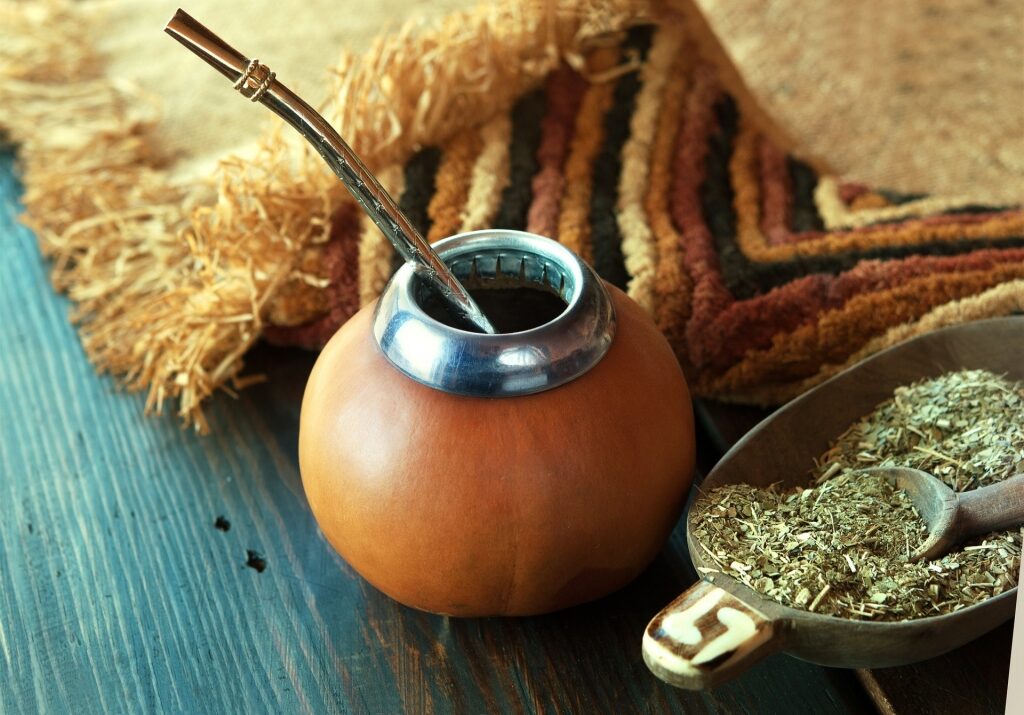
Mate
A staple of Argentina’s culture, sharing mate—an energizing tea-like beverage—is a national pastime. The bitter green brew is made out of the dried leaves of the yerba mate, a native South American plant, and gives a good kick of mateine (a similar stimulant to caffeine). Mate is traditionally served in a hollowed-out gourd, which is sipped through a metallic straw known as a bombilla.
Considered to be a social drink, on any given day you’re likely to spot Argentines gathered in parks or clustered on city benches, passing around their mate gourds, in this indispensable national ritual.
Dance the Tango
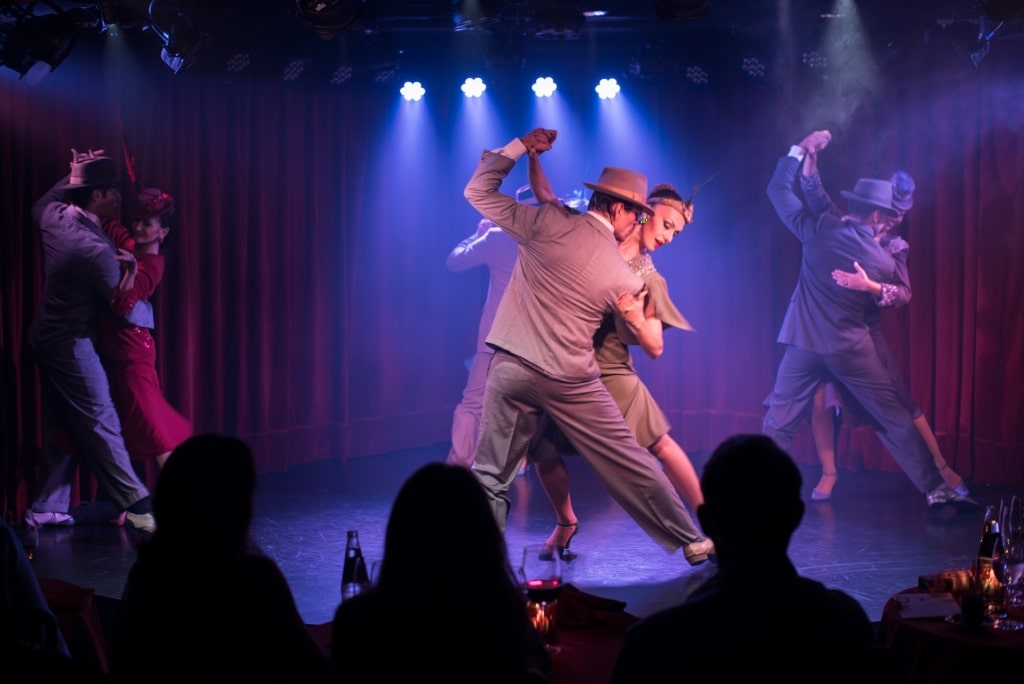
Tango
Argentina is known for tango. It’s perhaps the country’s most famous cultural contribution to the world stage, and few visitors to the country escape its display, filled as it is with drama and seduction. Infused with passion and marked by sultry movements, the sophisticated tango is said to have been birthed by immigrants who invented it as an attempt to dance their loneliness away.
The tango certainly has a timeless appeal, with its evocative music and intricate steps, and there are numerous ways to engage with it during your visit.
Look for marquee shows at glitzy tango palaces, particularly in Buenos Aires, where you can see flashy and highly choreographed performances put on by professional dancers. Apart from those high kicks and showy antics, you’re just as likely to find talented tangueros busking on city streets.
You can also observe the locals dancing the night away at a more causal neighborhood milonga (traditional tango dance hall) for a feel of “real” tango. Here, you can watch this beloved part of Argentina’s culture most authentically realized as dancers of all ages and levels whirl around the dance floor in circles. Just be prepared to stay up late—the action at many of the milongas often doesn’t get going until close to midnight.
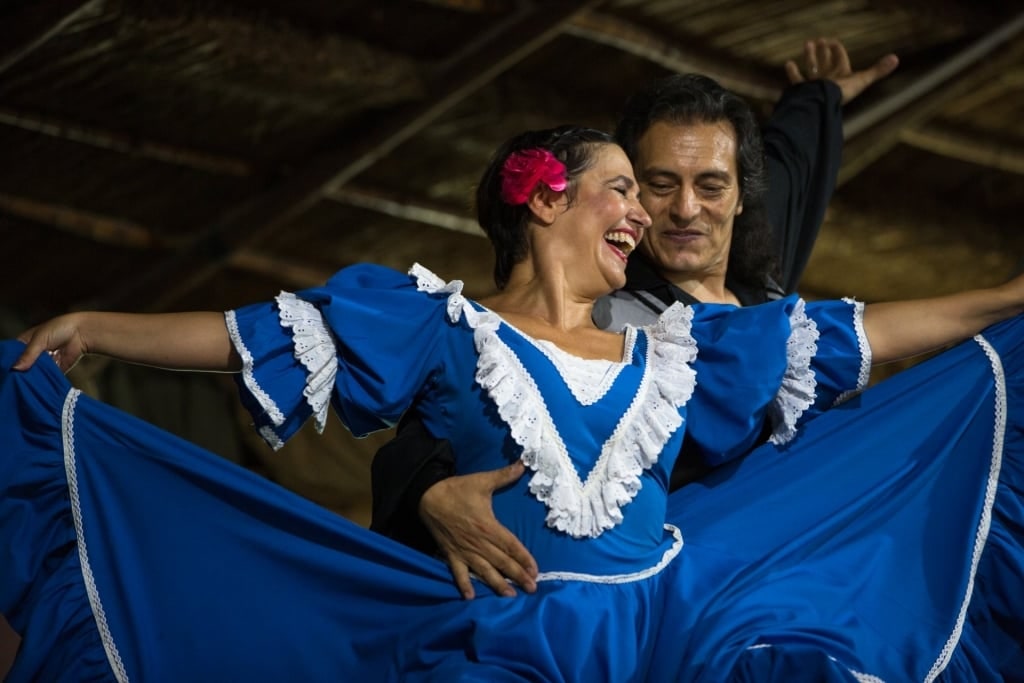
Tango
Want to try out your own tango skills? Several milongas offer dance instruction before they open, so you can work on your own fancy footwork earlier on in the night. Or you can look for an expert dance instructor or school for a private lesson.
In Buenos Aires, you can also dip into museums to learn more about the art of tango, like the World Tango Museum, which traces the history and evolutionary art form of the dance and related cultural scene.
Raise a Glass of Wine
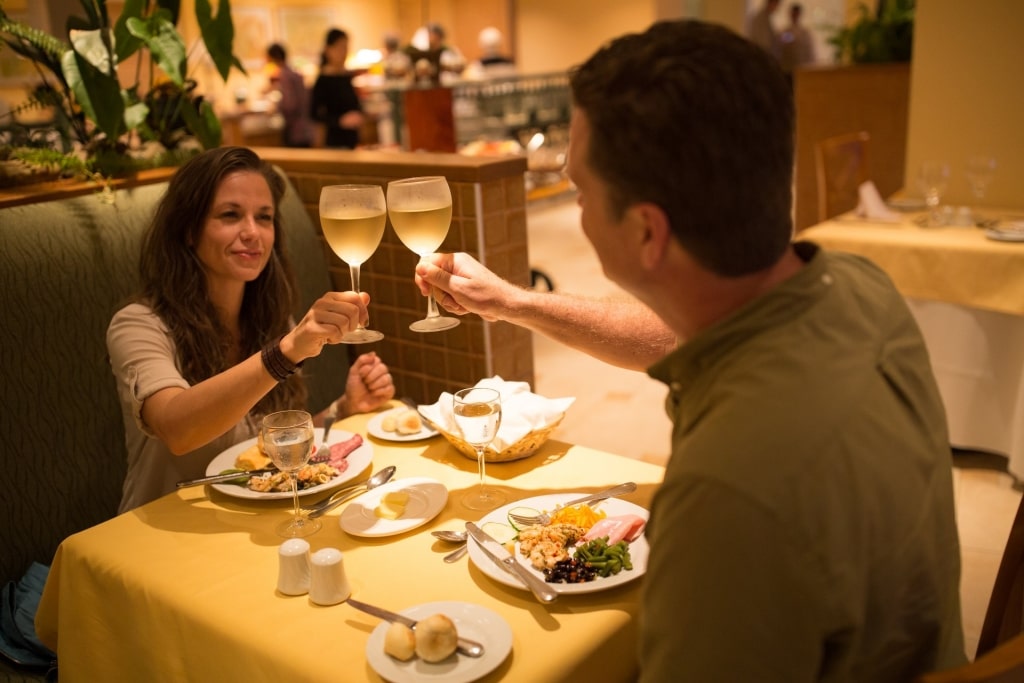
Wine
Argentina’s abundance of sun-kissed valleys turn out award-winning wines that lure in oenophiles from all over the world. You can easily explore the country’s output glass by glass from restaurants and bars across Argentina. Or, you can have a sneak peek by picking up some Argentinian bottles from your local wine store before you even set off.
Most notable are Argentina’s world-class Malbecs, the deep, earthy, plum-flavored wines that are largely sourced from the high-altitude cluster of vineyards in Mendoza.
But don’t stop your Argentinian wine-tasting tour with Malbec alone. The country is also known for its delicate, aromatic white Torrontés, with its slight acidity. Thought to be an import from Spain’s Rioja region, today it’s produced in some of the planet’s highest vineyards, in Argentina’s Salta wine region.
These are only two of the top Argentinian varietals that are well worth raising a glass to, with more exciting pours available on any local wine menu.
Get Into Fútbol

La Bombonera
In Argentina, fútbol—aka soccer—is more than mere sport: It’s practically a religion. Argentines are passionate about their teams and players, and until you’ve watched a game amidst a sea of chanting and stomping revelers, rocket flares flying overhead and banners swaying in the wind, you haven’t understood the true meaning of a sports fanatic.
After all, it was this fervor that gave birth to such Argentinian soccer legends as Diego Maradona and Lionel Messi, considered to be among the sport’s all-time greats.
One of the country’s biggest soccer rivalries unfolds between two teams in Buenos Aires: Boca Junior and River Plate. If you can nab tickets to watch them play at the famed La Bombonera stadium in Buenos Aires’s La Boca neighborhood (and aren’t too shaken by the intensity of it all), you will have reached the zenith of what a passion for soccer is all about.
Eat Meat
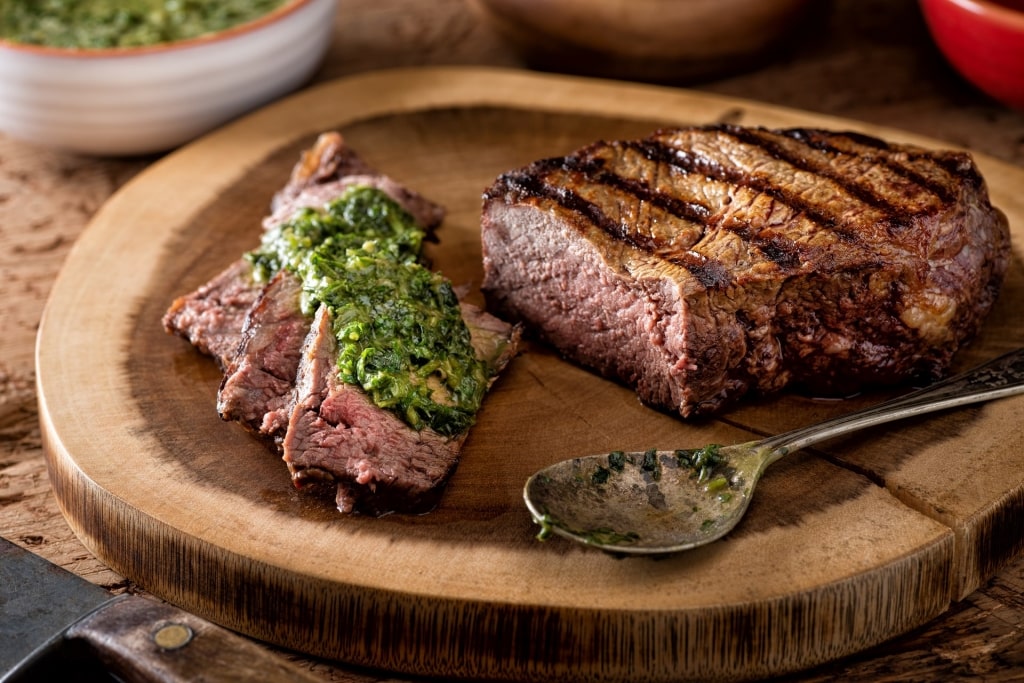
Steak
By and large, Argentina, a cattle-raising country, is made up of carnivores (vegetarians, you’ve been warned). Indeed, beef here is everywhere, and you don’t have to look far when wanting to tuck into a juicy cut.
Accordingly, Argentines have made an art form out of grilling, and parillas (grill houses) are one of the most popular Argentinian food options.
On the menu, you’ll find a wide selection of meats, like steaks and sausages, often paired with chimichurri sauce made with olive oil, garlic, and parsley.
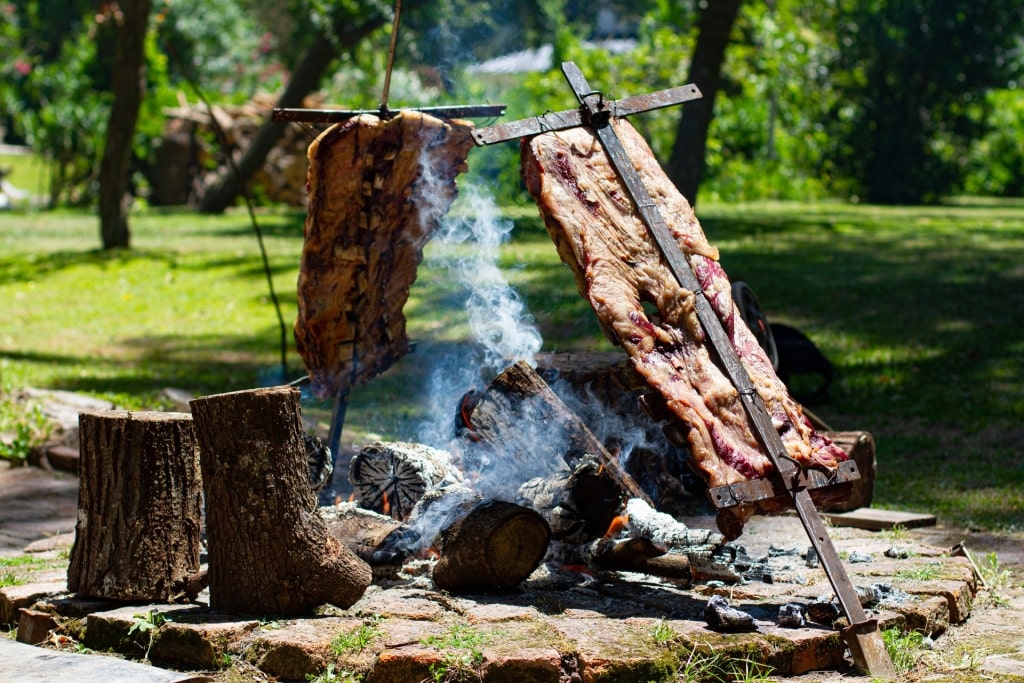
Asado
Also seek out the asado, which is the Argentinian take on the barbecue, with fine cuts of meat featured. Look out for options like chorizo (pork sausage), morcilla (blood sausage), bife de chorizo (sirloin), or costillas (ribs) paired with sides like sweetbread and grilled vegetables.
If you’re so lucky to nab an invite for an asado hosted at a private residence (it’s common for families to turn on their grills and gather on Sundays), don’t miss out. The social event is a cornerstone of Argentina’s culture, and a tradition born of Argentine cowboys, known as the gauchos.
Channel Your Inner Gaucho
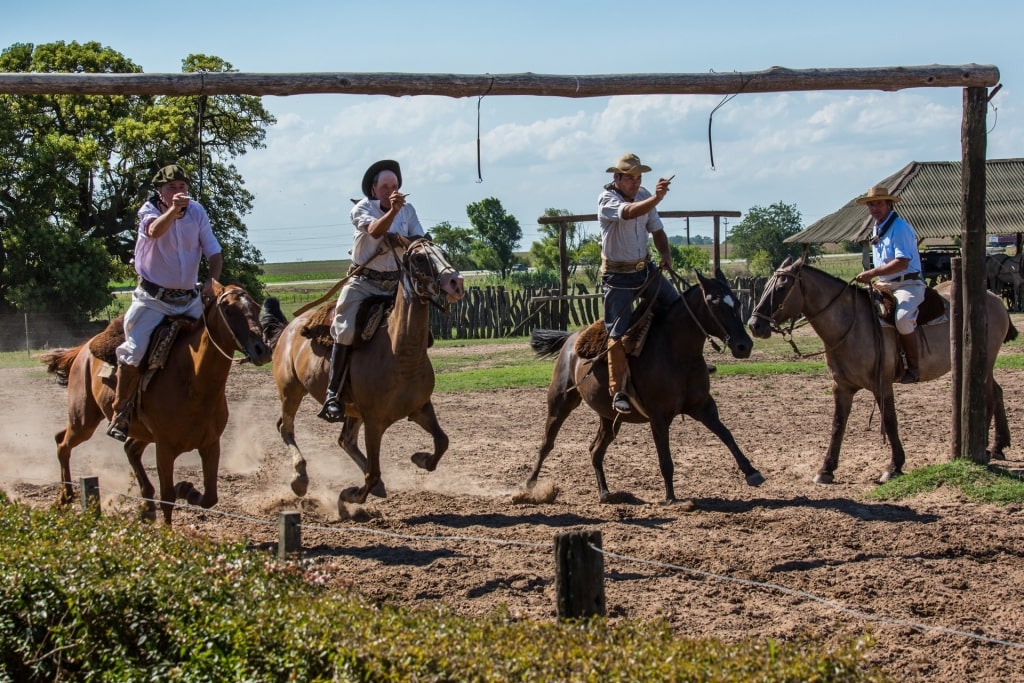
Gaucho
Cowboy culture might feel like a movement that’s born of the good old U.S. of A., but you’d be mistaken if you think that’s where it ends. Indeed, much of Argentina’s core is defined by its sweeping Pampas, a landscape of vast plains that comes pockmarked by charming old towns and sprawling ranches. It’s in these fields that herds of the country’s famous cattle graze, while agriculture thrives in wheat and soybean fields.
Traditional and rugged gaucho culture is born and bred in the Pampas as a unique mix of European and indigenous traditions. It best reveals itself in quintessential Argentinian cowboy towns like San Antonio de Areco, which hosts an annual gaucho festival each fall.
How to spot a gaucho? Their signature dress is a sure giveaway: Look out for their wide-brimmed hats, often paired with woolen ponchos.
Try Your Hand at Polo

Polo
Fútbol may reign supreme, but polo is also incredibly popular here, with Argentinian teams often coming out on top in international polo competitions. In fact, the country has turned out some of the world’s best players, including Adolfo Cambiaso, who’s widely revered as polo’s best-ever sportsman.
Visitors can take polo lessons readily at one of Argentina’s estancias, or nab tickets to watch a professional match.
Another interesting take on horseback-bound sports is pato, a surprisingly adrenaline-heavy sport that’s popular among gauchos. It’s best described as a mishmash between polo and basketball in which teams try to get the leather ball with handles through netted hoops. In fact, it’s designated as Argentina’s official national sport, even though it’s not the country’s most popular one.
Embrace Late Dining

Dinner
In Argentina, late dining at dinnertime is the norm, with many restaurants not getting busy until around 10 p.m. and few opening before 8 p.m. or 9 p.m. Plan a late and large lunch, or at least a mid-afternoon snack (and perhaps a siesta, too, which is still popular in many regions of Argentina) to help bridge the gap.
Cater to Your Sweet Tooth with Dulce de Leche

Alfajores
For Argentines, there is no sweeter a treat than dulce de leche. Indeed, this type of caramelized confection, traditionally made with milk and sugar, with its creamy, caramel-like taste, is snuck into various moments of the Argentinian day. It might be slabbed over a piece of toast for breakfast, poured over pancakes, infused in ice cream, or layered into cakes and pastries.
You’ll also find dulce de leche in alfajores, an import from Andalusia that are hugely popular with Argentines. Essentially a dulce de leche sandwich, they’re made up of two shortbread cookies that are joined together by the sweet spread.
Pucker Up
Argentines are a lively and animated people, and the greeting and farewell of choice here is to cheek kiss (on the right cheek) and, sometimes, to hug, as well. Notably, these cheek kisses are just as freely shared between men.
It’s little wonder, really, given the country’s strong European—and, specifically, Italian roots—where such kiss-based greetings are commonplace. So if you have the good fortune of befriending a local, be ready to pucker up and to dive on in with these familiar displays of affection.
Mangia, Mangia
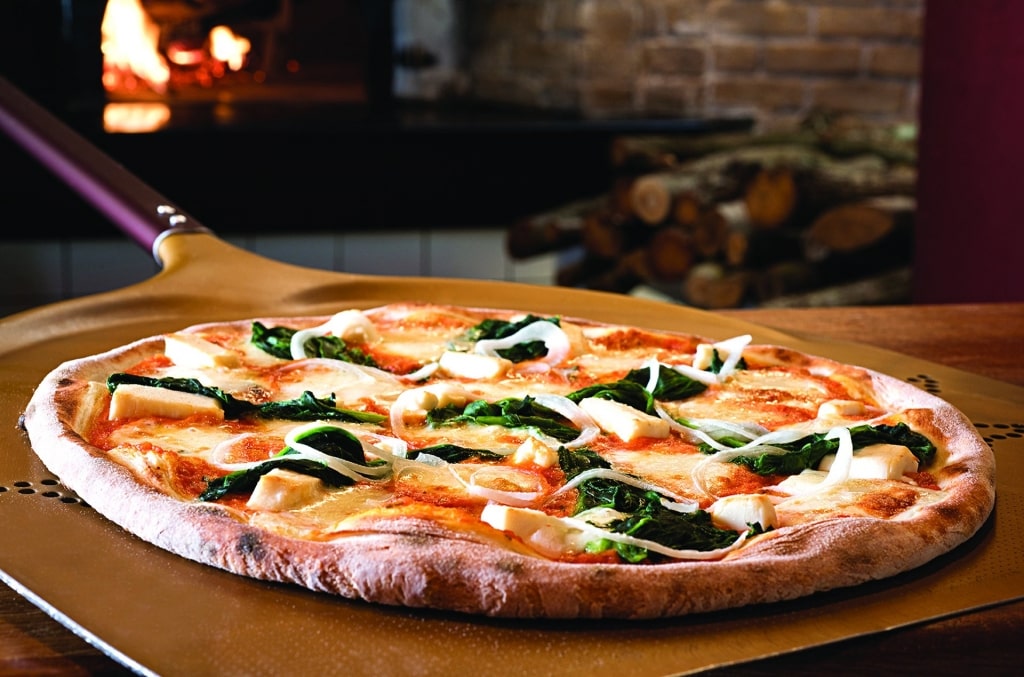
Pizza
Speaking of that Italian heritage, it couldn’t be a culture influenced by Italy without making mention of food, with pizzas and pasta ubiquitous on restaurant menus throughout the country. Indeed, the influence of the country’s Italian immigrants, who mostly arrived in the late 19th century, has failed to wane when it comes to the kitchen.
With handmade pasta covered in sauce, cheesy pizzas, and gelato aplenty, Italian food options here have got you covered when it’s time to refuel.

Recoleta Cemetery
Immerse yourself in Argentina’s culture and traditions while on a cruise vacation. Browse cruises to Argentina on our website and book your Celebrity Cruises vacation today.


